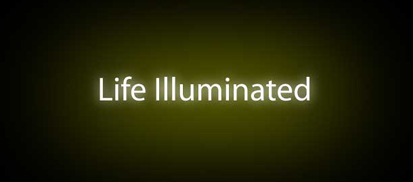...Growing List of Symposia Speakers
and Topic Ideas
The Art.Life.Science exhibit will be a great opportunity to allow the general public to learn more about the science behind the exhibits, the symbolism behind the artwork, and the intentions of the creators of the pieces in the show. At this early stage, all the speakers and features of the symposia are not finished. However, the outline below and some sample speakers will give an idea about the exciting possibilities of the event. Public Education Workshops will also be held.ossibilites of the symposia.
Symposia Events
1) Panel discussion with artists, scientists, curators and media representatives talking about:
a) Where do you draw the line - when is it art and when is it science?
b) Communication of science to the general public - how does art contribute?
c) Sensationalism and the media and in art exhibits.
d) Best sources of media information to learn about science.
e) What are the new scientific symbols in our culture? Which ones have become "household words" and which ones should be but are not?
f) What do we all need to know about science to be well informed citizens for things like voting, health choices, insurance, daily life issues?
g) Artists as inventors and predictors of future discoveries.
2) Panel discussion with artists and scientists and art historians and science historians.
a) How have artists traditionally used science in their artwork? Is there any history of scientists utilizing art?
b) How might artists and scientists benefit from interacting with each other?
c) What are the concerns scientists have about artists using scientific subject matter? Is there still room for "artistic licence" when artists work with science topics and ideas?
d) What is it about today's science that is inspiring artists to move beyond mere "Science as inspiration" to utilizing scientific methods, materials and concepts? Can you compare an artist that looks at nature around us to those that look at electron microscope pictures for their inspiration? What is the difference between using a snapshot of an outdoor scene for reference and using an image taken through a microscope or other means of something we normaly can not see?
e) Common goals of artists and scientists. Some might be to explain the world, satisfy curiosity, enjoyment of visual aesthetics, others?
f) How do artists find out about the science that inspires their artwork? Do they go to scientists? The media? The library?
g) What is happening right now to get artists and scientists together? There are many groups and conferences taking place around the world. Why?
3) Speakers from the exhibit - a few samples of talks by the artists and scientists that will be presented (more to come). Speakers will give audio-visual presentations of their work.
a) EUGENE TSUI: An Architecture Of Peace: Nature and Humanity As One
Eugene Tsui is one of the major forces in international architecture today and is considered the pioneer of implementing innovative ecological technologies and biological processes as a basis for strikingly imaginative form. His designs are developed through a careful and rigorous study of nature as a basis for design insight and application. His work was recently exhibited with the work of Frank Gehry and Santiago Calatrava, at the Victoria and Albert Museum in London, England (September 2003-January 2004). He has been a keynote speaker at many prominent institutions and conferences such as The Union of International Architects Conference in Beijing, China, 1999; The Chicago Humanities Festival in 2002 and the Harrelson Lectures of the Chancellor’s Office at the University of North Carolina in 2003.
a) FRANCES WHITEHEAD on her work (description to come).
b) A.M. HOCH discussion session on the nature of memory from a variety of different perspectives, including neuro-science, psychology, and poetic/painterly.
c) LAURA SPLAN on her work (description to come).
d) HUNTER O'REILLY on her work (description to come).
e) JULIE NEWDOLL on her work (description to come).
f) EVA LEE on her work (description to come).
These workshops will be geared towards the general public and their understanding of basic science. An open call for breakout session leaders and workshop ideas will be held to build up this portion of the presentations.
1) Workshop by Hunter O'Reilly: Living Drawings - Created with Bioluminescent Bacteria
Viewing DNA Under the Moonlight, 2003 (lights on)
Viewing DNA Under the Moonlight, 2003 (lights off)
Hunter O'Reilly will teach participants how to create drawings on seaweed nutrient agar in petri dishes. "Viewing DNA Under the Moonlight" (above) is an example of one of these drawings. The bacteria create their own light via expression of the lux genes. The bacteria first grow to create the bright light of the drawing and then as the bacteria use up the available nutrients the bacteria slowly die over several days. As the bacteria die the drawing changes and slowly fades into complete darkness. A series of photos will be taken of the bacterial drawings over several days as they grow and eventually die.
